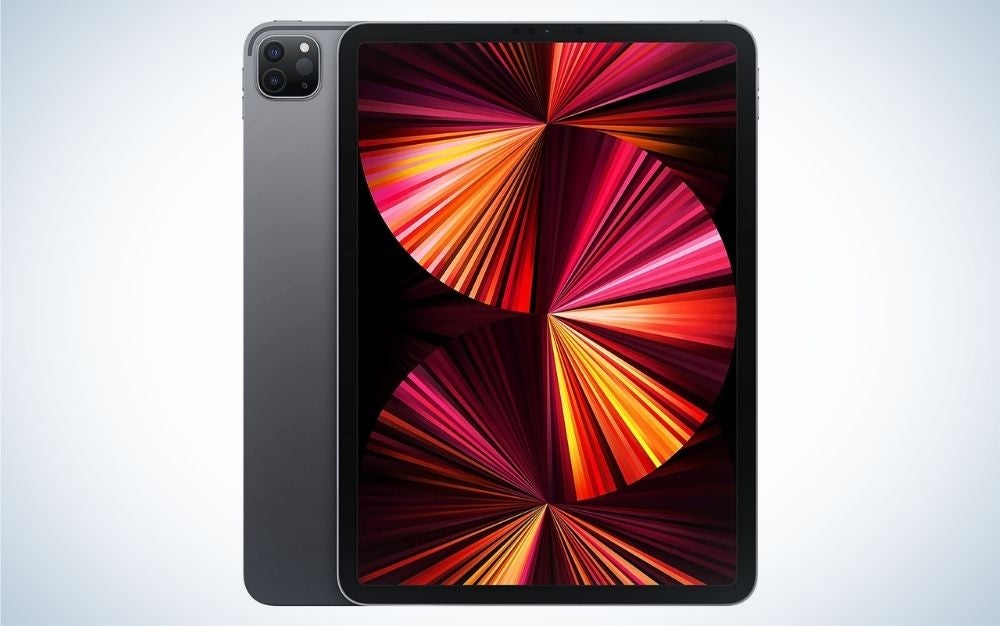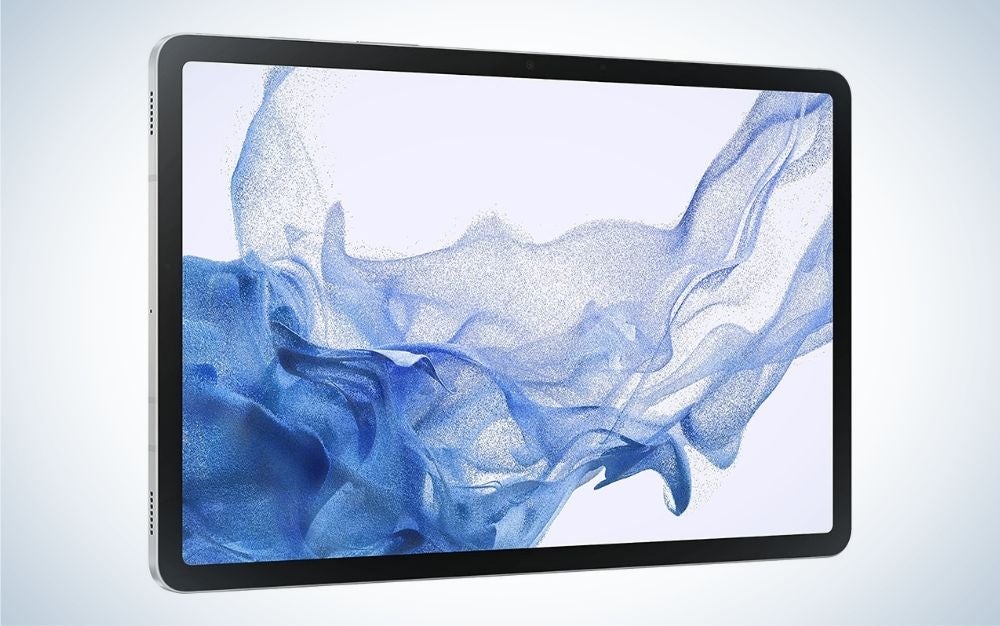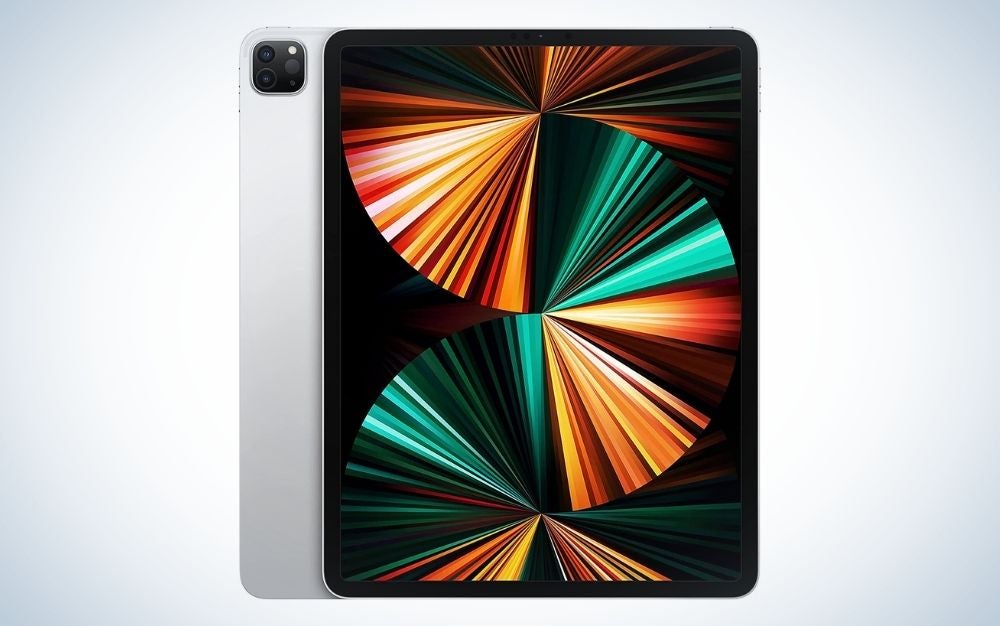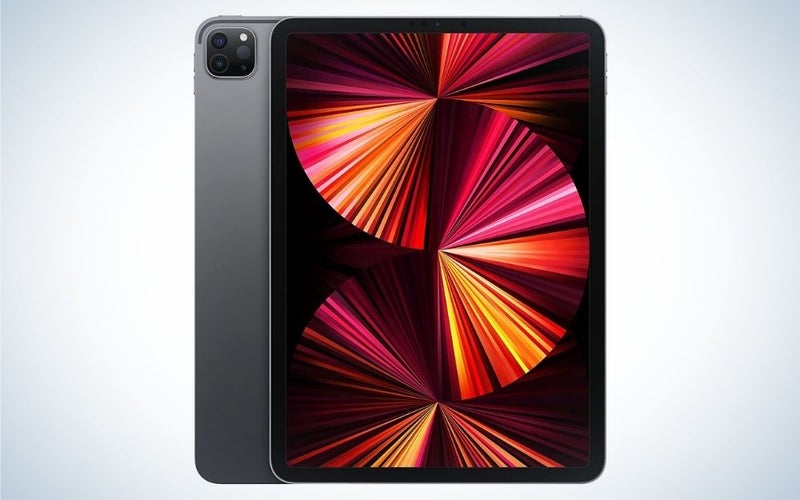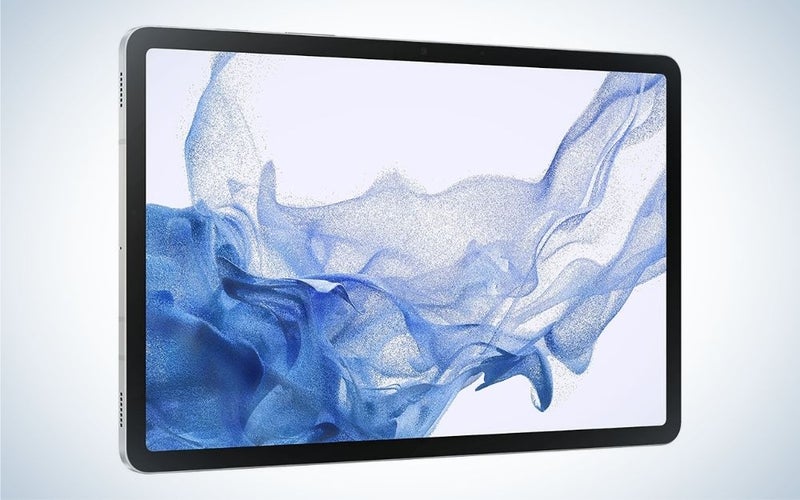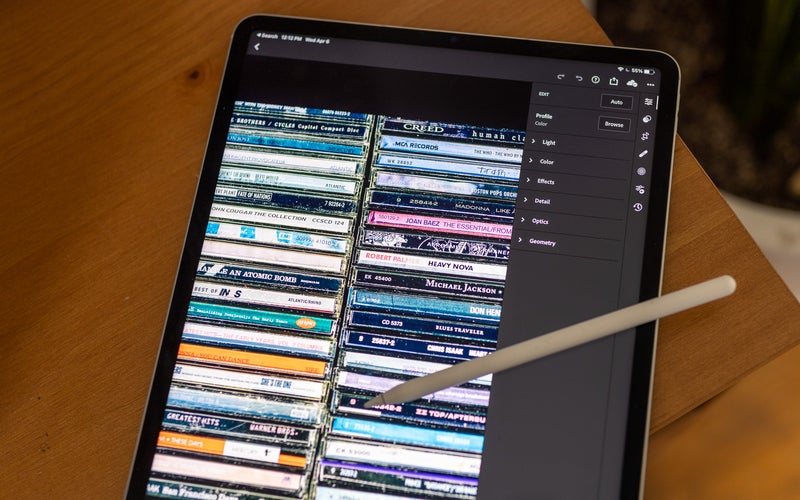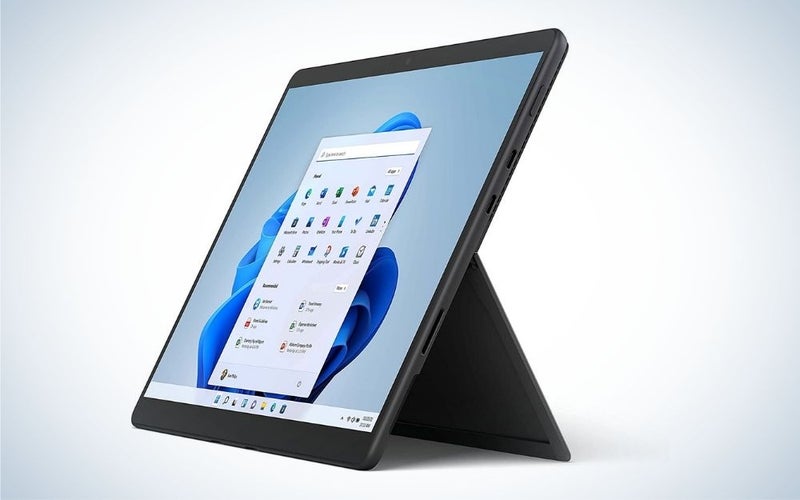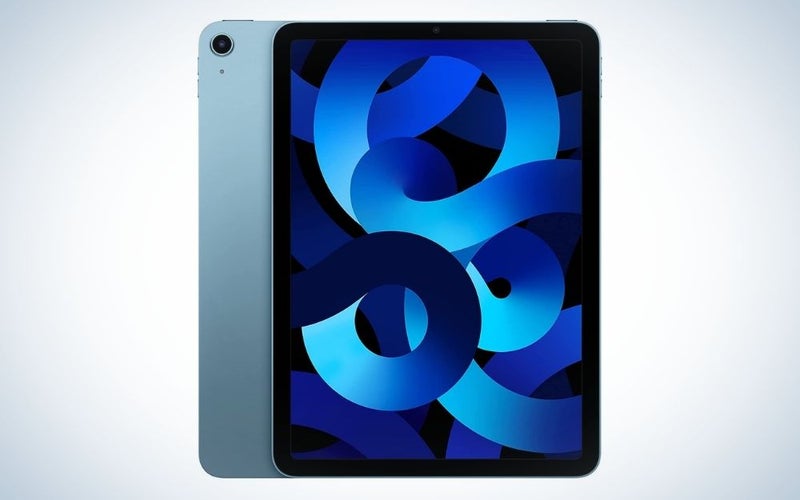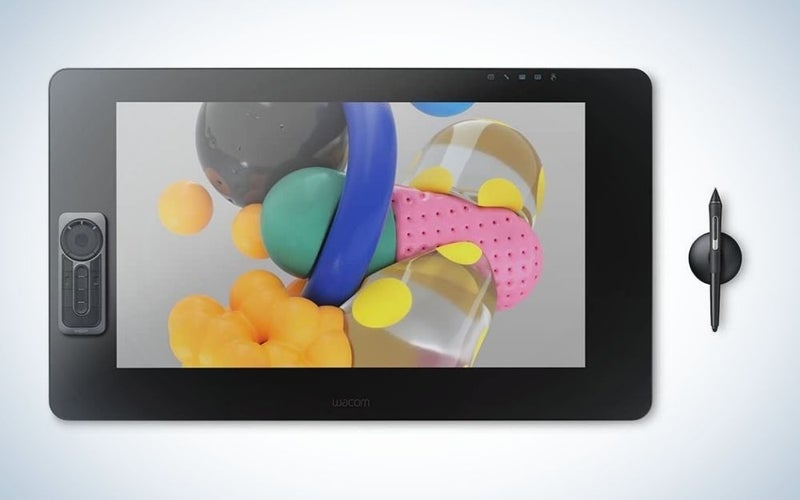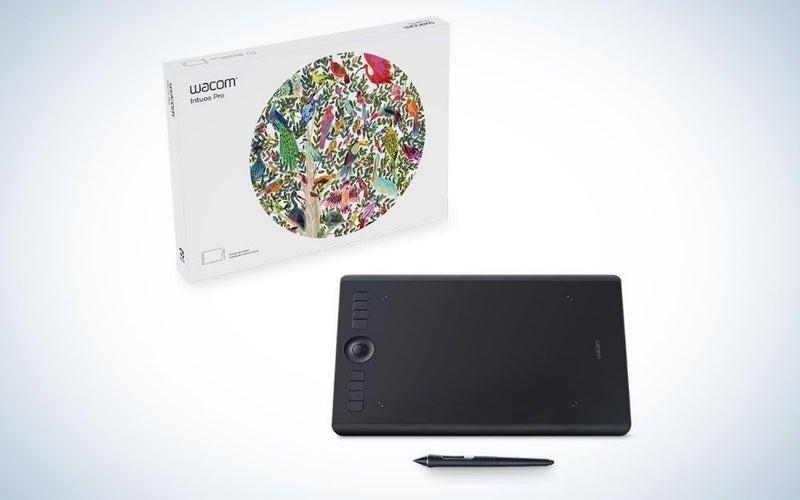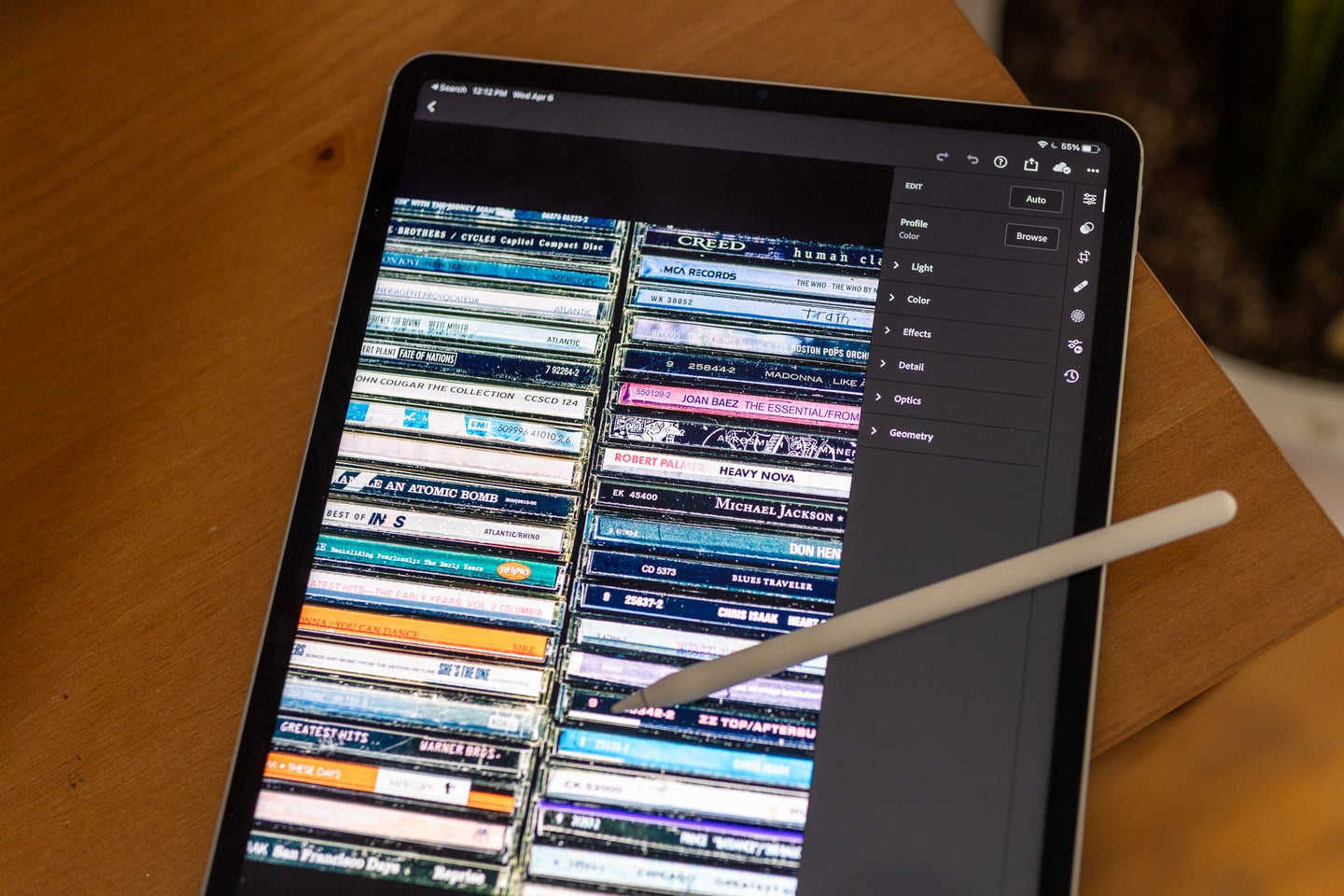
We may earn revenue from the products available on this page and participate in affiliate programs. Learn more ›
Just a few years ago, using a tablet for photo editing seemed outlandish. For all the years we have been in the digital age of photography, editing photos usually meant tethering ourselves to a desktop or a laptop with a keyboard and mouse. We made do with hotkeys and shortcuts and clicking through menus, but in recent years as computing power became more efficient and affordable, these same functions have been ported over to a much more suitable tool: The best tablets for photo editing give laptops a run for their money when it comes to speed, versatility, and usability.
- Best overall: iPad Pro 11” (3rd Generation)
- Best budget: Samsung Galaxy Tab S8
- Best for photo and video editing: iPad Pro 12.9” (5th Generation)
- Best for students: Microsoft Surface Pro 8
- Best for travel: iPad Air (5th Generation)
- Best pen display: Wacom Cintiq Pro 24 Creative Pen Display
- Best with pen accessory: Wacom Intuos Pro Creative Pen Tablet
Things to consider when shopping for the best tablets for photo editing
While tablets can offer ease of use and portability, there are several things to consider when making your choice. Do you need a solution to replace your main laptop or desktop, or do you need a portable supplement to your main PC? Are you in a controlled studio/office environment, or is traveling light and the ability to work in tight quarters a priority? Also consider battery life–few things are more frustrating than running out of battery while you’re in the middle of important work. Of course, there’s the balance between all-out performance and budget.
Operating system
Perhaps most important: make sure that the software you plan to use is available for the OS of the tablet. While nearly full versions of Photoshop are available for iPad and Windows, for example, Android tablets can only run Photoshop Express, a scaled down version.
With the introduction of Apple’s venerable iPad into the computing mainstream, and its competitors offering more power and features with every new refresh, amateurs and professionals alike have been given tools and power, along with functionality, ease of use, and portability like never before.
Add to that software developers’ willingness to develop applications for the devices that consumers are using more and more: smartphones and tablets–availability of software, along with the power, features, and portability of the latest hardware make editing photos on tablets easier and more creatively liberating than in the past.
Screen size and resolution
Tablets have grown in recent years. Apple’s iPad Pro line goes all the way up to a 12.9-inch screen, which is just about the same size you’d get with the smaller MacBook Pros. Dip into other manufacturers and they can get even bigger. Samsung offers the excellent Galaxy Tab S8 Ultra with a 14.8-inch screen. If you’re buying a tablet specifically for photo editing, extra screen real estate can really come in handy for keeping a big version of the image and the editing interface visible at the same time.
When it comes to resolution, you want as many pixels as the device can muster. Prices tend to go with resolution, but it creates more room on the screen for elements and makes your photos look generally sharper if you’re trying to show them off.
Battery life
Editing photos and videos, especially if they’re high-res, can tax even the burliest battery. Judging actually battery performance can be challenging because a simple mAH rating won’t give you an accurate picture of how it will perform in the real world. Your best bet is to check reviews or just expect much shorter life than the specs promise.
Built-in storage
Some tablets offer expandable storage via microSD cards. If you’re working with a tablet without expandable storage, however (we’re looking at you Apple), it’s usually worth paying extra for built-in storage. Even 1TB can go quickly when you dump high-res images and a couple movies to watch on the plane onto your device.
Our picks for the best tablets for photo editing
Now that we’ve covered some of the basics, let’s move onto the actual picks. This list of the best tablets for photo editing represents a range of tablets that appeal to different users with varying budgets. As with any product category, there is always overlap and all of these devices will likely treat you well no matter what you’re working on.
Best Overall: iPad Pro 11” (3rd Generation)
Apple
Why it made the cut: This is the ideal mix of power and portability for photographers who want to work in the field.
Specs:
- Screen size: 11 inches
- Resolution: 1668 x 2388
- Weight: 1.04 pounds
Pros:
- iOS operating system
- Powerful performance
- Excellent battery life
- Highly portable
- Deep iOS app availability
Cons:
- 600 nits max brightness
- SDR only–no XDR “Extreme Dynamic Range, which can be found on the larger iPad Pro 12.9” model.
- Larger capacity versions can get expensive.
Featuring the newly introduced, powerful yet energy efficient Apple M1 chip, this slim tablet straddles a line between performance and budget–with a healthy lean towards the performance side, as prices can rise with the larger storage options. We’re at a stage now where even these smaller tablets are packing the kind of power you’d normally expect in a larger desktop or laptop solution.
With every generation of hardware, the ever growing Apple iOS ecosystem offers robust support and app availability. If you’re willing to spend the cash, you can get up to 2TB built-in storage. Because Apple is so dominant in the space, you’ll also never run into a shortage of options when it comes to accessories or cases.
Best Budget: Samsung Galaxy Tab S8
SAMSUNG
Why it made the cut: Samsung’s advanced tablet can handle heavy tasks at a fraction of the price compared to its main competition.
Specs:
- Screen size: 11 inches
- Resolution: 2560 x 1600
- Weight: 1.1 pound
Pros:
- Android operating system
- Great price-to-performance ratio
- Cheapest of the Galaxy Tablet family
- Sharp, vivid screen
- Good battery life
Cons:
- Limited viewing angles
- 500 nits max brightness
This powerful newcomer and an upgrade from the Samsung Galaxy Tab S7 is the least expensive tablet in the Galaxy Tab family.
With a large, 11-inch display, Snapdragon 8 processor and 128Gb of internal storage, this option provides great performance for the money–especially considering that the accessory S Pen is included, unlike the Apple Pencil for the iPad. The TFT LCD, while sharp and vivid, limits viewing angles, but it shouldn’t be an issue considering you’ll be looking directly at the tablet while you work.
Android platform allows access to many open source applications for beginners on a tight budget.
Best for Video and Photo Editing: iPad Pro 12.9” (5th Generation)
Stan Horaczek
Why it made the cut: The most powerful tablet around also has one of the best screens we’ve ever seen.
Specs:
- Screen size: 12.9 inches
- Resolution: 2048 x 2732
- Weight: 1.41 pounds
Pros:
- iOS operating system
- Large, sharp, vivid screen capable of extended color range
- Powerful processing capability
- Good battery life
Cons:
- Higher capacity versions are expensive
- Apple Pencil not included
The top of the heap and currently the largest and most powerful iPad available, the 5th Generation iPad Pro 12.9” features the powerful M1 chip, a large XDR (Extreme Dynamic Range) Liquid Retina display capable of producing sharp, bright, vivid images with a wider color gamut than its 11-inch sibling. The specs are uncompromising, as is the price, but well worth it for the most demanding professionals: the display is capable of 1000 nits maximum brightness for SDR content, and 1600 nits maximum for HDR content
Apple’s highly supported iOS app ecosystem remains a key feature, just like with any other iOS product.
Best for Students: Microsoft Surface Pro 8
Microsoft
Why it made the cut: This machine runs a full version of Windows so you can install all the programs you want.
Specs:
- Screen size: 13 inches
- Resolution: 2880 x 1920
- Weight: 1.96 pounds
Pros:
- Large display
- Sleek design
- Powerful processor
- Suitable laptop replacement
- Familiar Windows platform
Cons:
- Screen brightness tops out at 450 nits
- Accessory cover and keyboard sold separately
The Microsoft Surface Pro family of tablets sports a key feature for many consumers: familiarity. The ubiquitous Windows platform is likely a familiar environment for any student in a classroom situation, and the Office suite of products will be critical for anyone soon to be entering the workforce.
Featuring an Intel Core i5 (11th Gen) processor, 128 Gb storage, this model is the only tablet in this list with a removable/upgradeable SSD to increase storage capacity. The large, sharp 13” display makes this viable not only for photo editing, but also for productivity tasks like emails and reports. The Windows platform and optional keyboard make it an all-in-one solution for students and eliminates the need for an additional PC.
Best Tablet for Travel: iPad Air (5th Generation)
Apple
Why it made the cut: It’s smaller and offers improved battery life compared to its pro pals.
Specs:
- Screen size: 10.9 inches
- Resolution: 1536 x 2048
- Weight: 1.03 pounds
Pros:
- iOS operating system
- Powerful M1 processor
- P3 wide color gamut display
- Slimmest and lightest option
Cons:
- Limited storage options (64Gb or 256Gb)
- 500 nits maximum brightness
- Middling battery life
- Apple Pencil not included
Easily the most portable option at only 1.02 pounds, the iPad Air (5th Generation) is the model to beat if packing light is a priority. With the powerful Apple M1 chip, you won’t be sacrificing performance for size and weight. With the smaller size comes a trade-off: a lower capacity battery provides only average battery life, and while the 10.9” screen is still a decent size, it provides only a brightness of 500 nits.
Like all the other iOS devices on this list, it is bolstered by the widely supported iOS app ecosystem.
Best Pen Display Tablet: Wacom Cintiq Pro 24 Creative Pen Display
Wacom
Why it made the cut: If you don’t need to work on the move, this display offers tons of room to work.
Specs:
- Screen size: 24 inches
- Resolution: 3840 x 2160
- Weight: 15.43 pounds
Pros:
- Large 15.6-inch 1920 x 1080 Touchscreen
- 8192 Levels of Pen Pressure Sensitivity
- Programmable hotkeys
Cons:
- Separate PC/laptop needed; not a standalone computer
- Maximum 350 nits brightness
The Wacom Cintiq line has been a mainstay of the photo retouching and illustration industry for years, and for good reason. Large, sharp, high quality displays that allow direct pen and touch input right on the screen. The catch: they’re accessory tablets that require a PC, and are not standalone computers.
They are often used by artists as supplementary input devices to a larger, separate monitor. While not offering the brightest of displays, Wacom opts more for accuracy, recognizing that these tools are usually used in controlled studio or office environments, rather than a portable travel tool.
Best Pen Accessory Tablet: Wacom Intuos Pro Medium Pen Tablet
Wacom
Why it made the cut: Wacom’s more affordable tablet still offers exceptional control.
Specs:
- Screen size: N/A
- Resolution: N/A
- Weight: 1.5 pounds
Pros:
- 8.82 x 5.83″ Active Area
- 8192 Levels of Pen Pressure Sensitivity
- USB & Bluetooth 4.2 Connectivity
- 8 Programmable Express Keys, Touch Ring, Radial Menu, Pen Switches
- Included Wacom Pro Pen 2
Cons:
- Not a display tablet
- Separate PC/laptop needed, not a standalone computer
Much like Wacom’s Cintiq line display tablets, the Intuos tablets have been an industry standard tool for years. Unlike the Cintiq line, the Intuos are not display tablets–meaning that the tablet itself is basically just a large pad that accepts pen and touch input. Think of it like a giant mouse trackpad, but with more precision, accuracy, and varying levels of pressure sensitivity–the harder you press, the larger a brush stroke becomes, for example.
A long-favored feature of this line are the numerous programmable hotkeys to which you can map your most used controls, along with a touch ring for easy scrolling. These tablets are input accessories–you’ll need a separate PC.
FAQs
Q: What is the best tablet for editing photos?
With the number of models on the market, take a look at not only the features of the hardware, but availability of the software you plan to use. Do you mainly use Adobe products such as Lightroom? Or do you use more niche photo editing software from Luminar? Make sure that the programs you plan to use are available on the tablet’s respective OS platform.
Q: Can a tablet be a replacement for an entire computing setup?
With the power, features, and accessories available for tablets, It is now more possible than ever. Take a look at what you consider to be the key features of your laptop or desktop computing platform and make sure that those solutions are available in a tablet. Often, tablets will require separately purchased input accessories like keyboards and mice, to make sure to factor that into your budget.
Q: What are the differences between the operating systems?
The tablets featured in this roundup feature three distinct operating systems: iOS found on iPads, Windows found on the Microsoft Surface models, and Android. While interfaces amongst the different systems have largely been streamlined over the years, pay special attention to the “ecosystems” of each of the operating systems when making your choice. Do you have an iPhone and use iMessage and the iCloud backup system? If so, an iPad might be the seamless choice for you. Or, do you like to experiment with open source software created by community developers? If so, Android is worth a look. Of course, many of us are familiar with the Windows operating system, and maybe that level of familiarity will be of value to you.
Q: How do I know if my software will work on a tablet?
Make sure to look at the software developer’s compatibility lists for each piece of software you use. Developers will clearly list which operating systems are supported, with some software even being exclusive to certain operating systems.
Methodology for choosing the best tablets for photo editing
We compared price, performance, battery life, screen size, color gamut, and brightness. We also paid attention to the key accessories such as pens or upgradable storage, while also taking into consideration each tablet’s operating system and how those features might be applied in practical applications. We have also had hands-on time with a number of these devices, including the full breadth of Apple devices, which tend to dominate lists of the best tablets for photo editing.
Final thought on the best tablets for photo editing
There’s never been a better time to move to a tablet as a solution for editing photos–with price, performance, and battery life improving with each new generation. With the introduction of Apple’s powerful M1 chip and Windows and Android tablet makers remaining competitive in a crowded market, consumers win when it comes to software compatibility, choice of powerful hardware, and bang for your buck.
The post The best tablets for photo editing in 2023 appeared first on Popular Photography.
Articles may contain affiliate links which enable us to share in the revenue of any purchases made.
